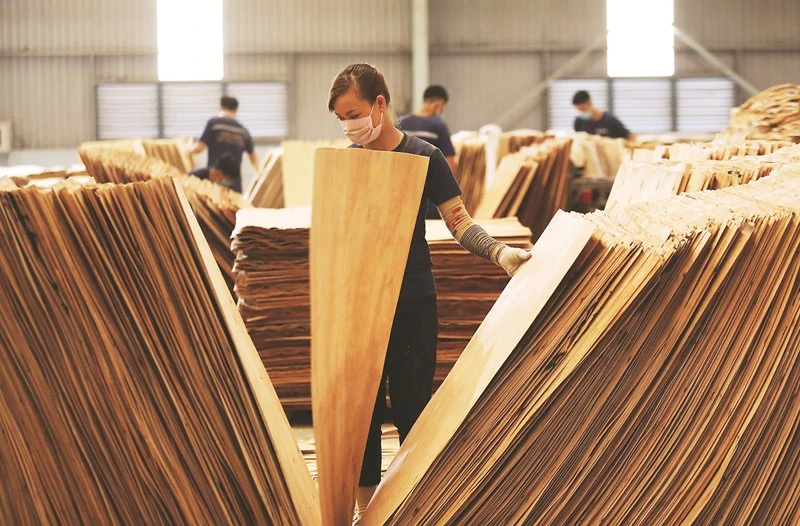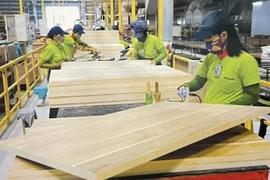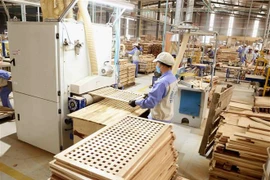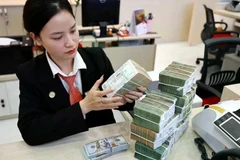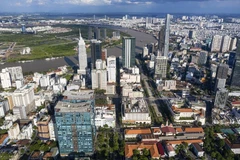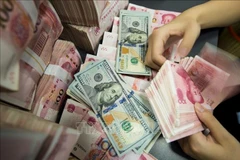Hanoi (VNA) – Although Vietnam saw positive results in exports of wood and wooden products in first quarter of this year, breakthrough measures are needed for the country to overcome global economic headwinds and achieve the yearly export target of 18 billion USD.
According to the Ministry of Agriculture and Environment, the export value of wood and wood products in March 2025 was estimated at 1.5 billion USD, bringing the total figure for the first quarter to 3.95 billion USD, an increase of 11.6% compared to the same period in 2024.
The US remained the largest market for Vietnam's wood and wood products, accounting for 53.1% of the market share. It is followed by Japan and China with the respective market shares of 13.2% and 10.6%.
Compared to the same period last year, the export value of wood and wood products in the first two months increased by 9.5% to the US and by 21% to Japan, while down 15.2% to China.
Among the top 15 export markets, the highest growth was seen in India at 95.9% and the largest decline in the Netherlands at 45.1%.
In 2025, the global political and economic situation is predicted to continue experiencing complicated fluctuations that will affect both domestic and international commodity markets.
Therefore, despite some initial positive results, fulfiling the export target set for this year requires breakthrough solutions and concerted efforts from the business community.
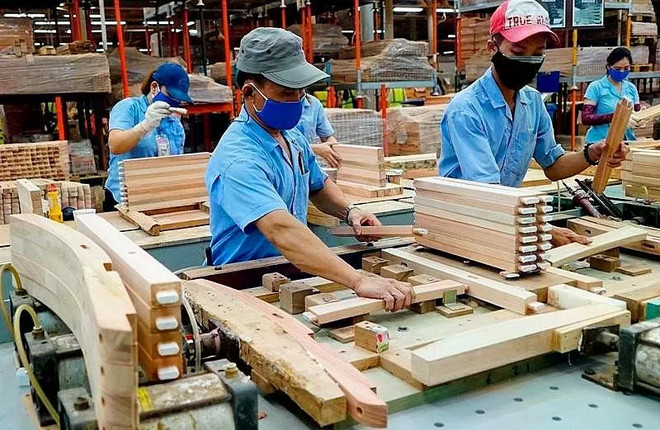
Nguyen Thanh Lam, CEO of Lam Viet Joint Stock Company, said that the US currently accounts for 50% of the company’s revenue. Regarding the US tariff policy, the firm pins high hope on the Vietnamese government’s negotiations, Lam said.
“Everything is still normal. The company has received orders until the end of September," he noted.
Additionally, the company has negotiated with partners to agree on sharing risks. It also eyes online exports to reduce intermediaries. In April, it plans to export three containers and sell on the e-commerce platform Amazon.
Lam also noted that wood enterprises have been diversifying markets for many years, including the UK, EU, Australia, Japan, and are now looking toward the Middle East.
Proactive adaptation
Over the past time, Vietnam's wood processing industry has been establishing a strong position on the global trade map, not only due to impressive export figures but also its strong and sustainable development. From a country primarily exporting raw materials, Vietnam has become one of leading wood and furniture producers and suppliers worldwide.
However, the wood industry faces significant challenges, such as the impacts of the COVID-19 pandemic and political tensions.
To foster the development of the Vietnamese wood industry, Vo Quang Ha, Chairman of Tan Vinh Cuu Joint Stock Company (Tavico), suggested that the industry adopt a new mindset to adapt to immediate difficulties.
Pursuing both domestic and export markets in parallel and repositioning market strategies, products, and raw materials are essential at this time.
Meanwhile, regulators should analyse the competitive advantages of each locality and identify the types of raw wood for different products.
The forestry sector aims for wood and forestry product export value to reach 18 billion USD in 2025 and 25 billion USD by 2030. Notably, the sector aims to align its growth with green development by 2030, ensuring 100% of forest areas are certified for sustainable forest management and 20% of natural forests have quality improved.
In processing and trading wood and forestry products, priority should be given to the use of modern and automated equipment to create high value-added products. Developing a high-quality workforce and upgrading facilities are also focused. Additionally, a wood trading centre will be developed to establish an international wood product trading hub and open market opportunities.
Currently, regulations and guidelines have been fully issued by the Ministry of Agriculture and Rural Development (now the Ministry of Agriculture and Environment) to align with international regulations on wood, wood products, and non-timber forestry products, promoting green growth, low emissions, and environmental protection.
Furthermore, the Vietnamese wood industry is standardising quality to meet international standards such as the Lacey Act (the US), the Illegal Logging Prohibition Act (Australia), Clean Wood Act (Japan), Act on the Sustainable Use of Wood (the Republic of Korea), and EU regulations on deforestation. These efforts will not only help the industry develop but also contribute to emissions reduction and environmental protection goals.
Wood enterprises are proactively adapting to the policies and mechanisms set by importing countries, such as the Carbon Border Adjustment Mechanism (CBAM) and the EU Deforestation Regulation (EUDR).
On the other hand, companies are also increasing the use of renewable materials and promoting sustainable forest management to meet the growing trends of green development in export markets./.
